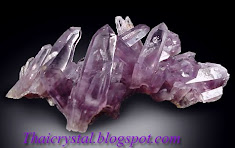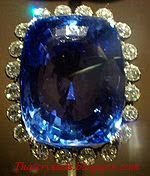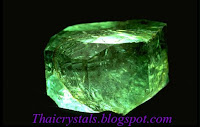Blue sapphire
Color in gemstones breaks down into three components: hue, saturation, and tone. Hue is most commonly understood as the "color" of the gemstone. Saturation refers to the vividness or brightness or "colorfulness" of the hue, and tone is the lightness to darkness of the hue. Blue sapphire exists in various mixtures of its primary (blue) and secondary hues, various tonal levels (shades) and at various levels of saturation (brightness).
Blue sapphires are evaluated based upon the purity of their primary hue. Purple, violet and green are the normal secondary hues found in blue sapphires. Violet and purple can contribute to the overall beauty of the color, while green is considered a distinct negative. Blue sapphires with no more than 15% violet or purple are generally said to be of fine quality. Blue sapphires with any amount of green as a secondary hue are not considered to be fine quality. Gray is the normal saturation modifier or mask found in blue sapphires. Gray reduces the saturation or brightness of the hue and therefore has a distinctly negative effect.
The color of fine blue sapphires can be described as a vivid medium dark violet to purplish blue where the primary blue hue is at least 85% and the secondary hue no more than 15% without the least admixture of a green secondary hue or a gray mask.
The 423 carats (85 g) Logan sapphire in the National Museum of Natural History, Washington D.C. is one of the largest faceted gem-quality blue sapphires in the world.

Custom Search

















































